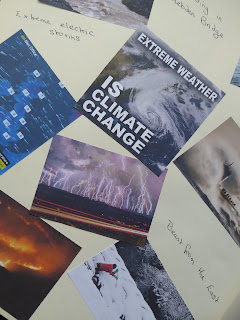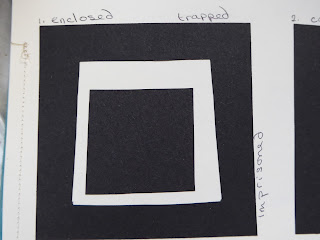I began my research, as I usually do, by searching for quotes:
Fig: 8:1
Conservation ... according to my dictionary ... is the act of conserving, or keeping from change, loss, injury etc and also protection, preservation and careful management of natural resources.
“Climate change has happened because of human behaviour” “We are the first generation to realise that we are killing our planet and the last generation to be able to stop it.” Francois Holland’s said “We have a single mission ... to protect and hand on the planet to the next generation.” “We have to wake up to the fierce urgency of the now” “Future generations will judge us harshly if we fail to uphold our moral and historical responsibilities.” Astrid Herbert says “Climate change is no longer a doomsday prophecy, it’s a reality.” Barack Obama said that “No challenge poses a greater threat to future generations than climate change.” Even Albert Einstein commented on the problem “We shall need a substantially new way of thinking if humanity is to survive.” I particularly like this Kenyan proverb, which I now have pinned up on my kitchen noticeboard: “Treat the earth well. It was not
given to you by your parents. It is loaned to you by your children.”
Fig: 8:2
These two paragraphs in Fig. 8.2 explain exactly what is happening to our planet.
Fig: 8:3
Fig: 8:4
Figs. 8.3, 8.4 and 8.5 show pages of research from my workbook. The focus highlighted in recent news stories is to limit global warming to 1.5 degrees Celsius rather than the 2degrees previously thought acceptable. I was interested to learn what difference this 0.5 degree would make.10 million fewer people would lose their homes to rising seas
2 million sq km of permafrost will be saved over centuries
50% reduction in global population experiencing water scarcity
1 per century limit on sea-ice-free summers in the Arctic and
50% reduction in species losing half their geographic range
Fig: 8:5
Fig: 8:6
This is a news photograph taken during the most recent fire on Marsden moor, just a few miles away from my home town.
Fig: 8:7
And Fig. 8.7 shows the flooding in Hebden Bridge which occurs with depressing regularity.Our next task was to think of words which relate to our theme and then to interpret them using only black and white paper.
My list was as follows: beauty of the sea; melting; cracking; powerful; turbulent; threatening; overwhelming; hunger; terror; stressed; vulnerable; violent; panic as flames spread or ice melts; worry about the future; shattered; confusion.
Fig: 8:8
Enclosed; trapped; imprisoned
Fig: 8:9
confined; crushed; enclosed
Fig: 8:10
Crushed; compressed
Fig: 8:11
Cracked; fractured
Fig: 8:12
Entwined; mingling; rhythmical; gentle
Fig: 8:13
Frenzied; vigorous
Fig: 8:14
Crushed; compressed; pressure; stressed
Fig: 8:15
Melting; peaceful
Fig: 8:16
Crushed; expelled; violent; vulnerable
Fig: 8:17
Fractured; cracked; shattered; violent
Fig: 8:18
Gentle; calm; peaceful; quiet
Fig: 8:19
Confused; frenzied; cracking; violent
I then chose seven of these black and white images to enlarge slightly using coloured papers. I have used papers previously coloured for this and a previous module but they are mainly in my chosen colour palette of blues, white and oranges.
Fig: 8:20
I like this sample very much and feel it could easily be developed into a final design to represent the cracking ice, turbulent seas/flood water and also the flames of the wildfires. It is definitely one that I will take forward into the next chapter
Fig: 8:21
This could represent the shifting ice floes as the ice melts and cracks, pushing sections out into the open seas.
Fig: 8:22
A more gentle design which could represent the ripples on the water or even fish swimming beneath the ice.
Fig: 8:23
More frenzied, cracking and disintegrating icebergs against a background of flames or simply the hot colours representing global warming in general.
Fig: 8:24
The 'orange' painted paper in this sample lends a smoky effect to the design which originally represented the feeling of being trapped so perhaps this is appropriate!
Fig:8:25
A development on representing conflict and confusion from Sian's examples in the module notes which seems appropriate to my theme, thinking of the wildlife caught in the fires and also on the disappearing ice masses in the Arctic and Antarctic.
Fig: 8:26
And finally a sample reflecting compression, thinking perhaps of how the ice caps melt from below and fall in on themselves.




































